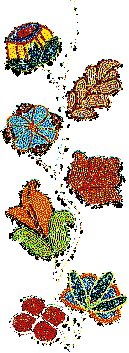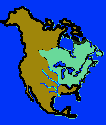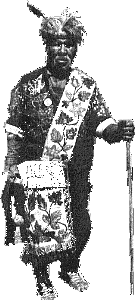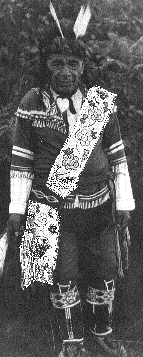
BANDOLIERBAGS
IN Woodland Indian History/Culture
 This map shows the general area inhabited in pre-contact days by tribes whose culture was Woodland. Many are of the Algonquian language group, but some are of other language groups. Culturally, they had many lifestyle similarities. A few bandolier bags (originally called "doctor bags"')were made over this whole area -- but the majority are by Anishinaabe Three Fires peoples -- Ojibwe, Odawa, Potawatomi. Bandoliers, which took a year or longer to make -- honoring men -- became part of Ojibwe culture, both for honoring and in relation to the Midèwewin or Grand Medicine Society. See Medical (Midèwewin) bandoliers -- And A Sad Story This map shows the general area inhabited in pre-contact days by tribes whose culture was Woodland. Many are of the Algonquian language group, but some are of other language groups. Culturally, they had many lifestyle similarities. A few bandolier bags (originally called "doctor bags"')were made over this whole area -- but the majority are by Anishinaabe Three Fires peoples -- Ojibwe, Odawa, Potawatomi. Bandoliers, which took a year or longer to make -- honoring men -- became part of Ojibwe culture, both for honoring and in relation to the Midèwewin or Grand Medicine Society. See Medical (Midèwewin) bandoliers -- And A Sad Story |
|
The somewhat murky photo below, scanned and photo-enhanced ferociously, was taken by Frances Densmore at a powwow at the then-remote Red Lake reservation in northern Minnesota July 4, 1908. This was organized by the Ojibwe; she was the only white person there. About 50 dancers who had horses are making the grand entry, parading downhill to the powwow ground. The 3 leaders -- at the left edge -- are wearing 2 bandoliers, straps crossed.
|
 |
|
At the right, the magnification shows one reason why bandolier bags became so large -- longer straps, longer bags, long fringes of woven beadwork at the bottom. This leader is wearing two bags whose straps cross over his heart, At his left hip, (our right of the photo), one pouch hangs down beyond his knee. Horses were farm animals to the people of lakes and woods; fancy beaded horse outfits, occasionally made by Cheyenne women, were never done here (and the rodeo never caught on either). But the large bandolier bags, straps crossed like soldiers' cartridge belts, made a brave showing, almost like beaded saddle flaps, on the rare occasions when there were horse parades. Below, two examples of typical large, low-slung bags worn by Lac du Flambeau (Wisconsin) dancers in post-World War I period. |
 |
Left, John Mink of Lac du Flambeau (Wisconsin Ojibwe) wearing a large bandolier bag with a beadwork date of 1930 across the top of the pouch. Lettering says "Minn" so it probably memorializes a Wisconsin - Minnesota ceremony held in 1930 and was an honor presentation then. |
|  |
|
On the right, Amikons, a Lac du Flambeau Ojibwe, photographed in 1923 wearing a large bandolier, a shirt with tin cone jingles along the ribbon lines, beaded half-leggins, and Ojibwe-style floral-beaded moccassins. His roach (headgear) is porcupine hair (that grows between the quills) or moose neck hair. |
|---|
| |

Bandolier bags were exclusively made by women for men. Occasionally, a woman might wear one she made for a husband, brothr or son who had died or -- in a Mide healing ceremony, she might be the stand-in for the man needing healing too debilitated to take part. Here, a White Earth (Minnesota) reservation woman was photographed, sometime between 1910 and 1915. She shows off her beadwork by rocking her baby -- in its beaded velveteen cradleboard -- while wearing her best headband and the large bandolier bag she made for her husband. (If it had been made for him by someone else, an honor presentation, she would not have put it on). |
|---|
BANDOLIER Menu
 CONTINUE -- Ojibwe Bandoliers 1
CONTINUE -- Ojibwe Bandoliers 1
Explanatory text and graphics copyright 1995, 1996.
CREDITS: Map: I drew it. 1908 horse parade: Frances Densmore, "Chippewa Music I, " Smithsonian Institution, 1909; reprinted by Ross and Haines Old Books, Minneapolis, 1973. Photo of John Mink (1930) taken on Lac du Flambeau (WI) reservation around 1940, courtesy Milwaukee Public Museum. Photo of Amikons taken by H.D. Smith, 1923, Lac du Flambeau, from "All roads are Good," National Museum of the American Indian/Smithsonian, 1994. Woman with bandolier and baby, Densmore "Chippwa Customs" Smithsonian Institution, 1929, reeprinted Ross and Haines Old Books, 1970.
Last Updated: Monday, September 02, 1996 - 4:46:06 AM

 This map shows the general area inhabited in pre-contact days by tribes whose culture was Woodland. Many are of the Algonquian language group, but some are of other language groups. Culturally, they had many lifestyle similarities. A few bandolier bags (originally called "doctor bags"')were made over this whole area -- but the majority are by Anishinaabe Three Fires peoples -- Ojibwe, Odawa, Potawatomi. Bandoliers, which took a year or longer to make -- honoring men -- became part of Ojibwe culture, both for honoring and in relation to the Midèwewin or Grand Medicine Society. See Medical (Midèwewin) bandoliers -- And A Sad Story
This map shows the general area inhabited in pre-contact days by tribes whose culture was Woodland. Many are of the Algonquian language group, but some are of other language groups. Culturally, they had many lifestyle similarities. A few bandolier bags (originally called "doctor bags"')were made over this whole area -- but the majority are by Anishinaabe Three Fires peoples -- Ojibwe, Odawa, Potawatomi. Bandoliers, which took a year or longer to make -- honoring men -- became part of Ojibwe culture, both for honoring and in relation to the Midèwewin or Grand Medicine Society. See Medical (Midèwewin) bandoliers -- And A Sad Story



